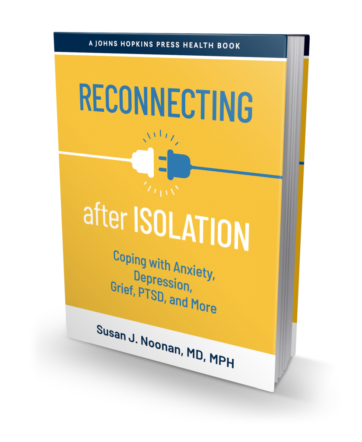Our world was broken again last week by the tragic loss of two public figures to suicide, designer Kate Spade and chef Anthony Bourdain. At the same time, the Centers for Disease Control and Prevention (CDC) released new and sobering data on the rising rates of suicide in the United States. They report that suicide has increased in almost every state from 1999 through 2016, up more than 30% in half the states, and highest in the western states. CHART Suicide took nearly 45,000 lives in 2016 alone. While almost half of these events were related to mental illness, the CDC reports that 54% of people were never known or acknowledged to have any mental health condition.
Suicide is usually considered an impulsive act in a troubled person who sees no way to change his or her painful circumstances, and sees no way out. Suicide thoughts and acts occur when a person’s deep emotional pain exceeds his or her ability to cope with that pain. It frequently surprises friends and family members, as the person often hides his emotional pain deep inside.
We are most familiar with suicide as a tragic consequence of a mood disorder such as depression or bipolar disorder. The thought distortions associated with these illnesses can make it difficult for a person to access or see logical solutions to his problems. We are less familiar with the 54% of suicides in those who have not been known to have a mental illness. The real number is actually smaller, for as the CDC report states, many of these individuals likely did have a mental health challenge that they or others had not yet identified.
Suicide is complex and multifactorial. Contributing elements include: relationship problems (42%), life stressors, life crisis (29%), substance abuse (28%), a mental or physical (22%) health problem, a work or financial problem (16%), or loss of housing (4%). Life events such as a separation, divorce, the loss of a job through which a person had identified himself, or the loss of financial security for self and family, all can be devastating to someone. Those without a known mental health condition are more likely to be male (84% vs 69%) and to die by firearms (55% vs 41%). Men tend to have a more difficult time acknowledging their emotional problems and seeking help; they are often culturally raised to appear strong on the outside and not demonstrate any perceived weaknesses.
The CDC report finds that suicide is higher in white vs ethnic persons, males, adults aged 45-64, with firearm ownership or a substance abuse history (drugs and alcohol). It is also known to be higher in rural vs urban settings and military veterans. Risk factors include a family history of suicide; living alone and socially isolated, divorced, widowed or separated, with lack of community and social support; a history of trauma or abuse; lack of health care; and stigma associated with seeking help. In addition, adolescents and teenagers who experience extraordinary peer pressure and bullying(physical, verbal, online) may be at increased risk for suicidal acts.
The substance abuse pattern in the United States has shown a rise that parallels suicide since 1998, with opioids and fentanyl leading the way. This is a major concern, as substance abuse is a contributing factor to suicide. CHART 2
Military veterans have shown a disproportionate rise in suicides, with a 22% higher risk for suicide in 2014 as compared to the US general population. Approximately 67% of all deaths were due to firearms. About 65% of all veterans who died by suicide were age 50 or older. Of the 20 suicides per day in veterans, 14 were not under the care of the VA health system.
What can cause the general rate of suicide to rise or fall across a large region? To answer this question, it’s helpful to think of the CDC’s study and the risk factors for suicide. We understand the rising rates of suicide as related to the rising rates of substance abuse and firearm access. In addition, limited mental health care and crisis intervention services in some areas, particularly rural areas, are thought to have an impact. Finally, the loss of community in our social structure today, with an emphasis on technology and social media instead of face-to-face contact, is felt as a burden to many people.
Falling rates in suicide would be achieved by improving access to mental health care and crisis intervention in the civilian and military arenas, strengthening economic supports, teaching coping and problem-solving skills to manage stressors, decreasing the stigma associated with receiving mental health care, firearms limitation, control over substance abuse, and promoting social connectedness in our communities. These are ambitious endeavors.
In the meantime, what do you look for and what should you say or do if you suspect someone is suicidal? Watch for a change in usual behavior, talk about being a burden to others, not wanting to go on, being withdrawn and isolated, increased use of alcohol or illegal substances, and other warning signs. Don’t leave the person alone. Remove any firearms or lethal means. Don’t be afraid to ask if he or she is suicidal. Talking about it will not cause him to act. Get him to an Emergency Department, call 9-1-1 or the National Suicide Prevention Lifeline at
1-800 273-TALK.
A version of this article was previously posted on Psychology Today.

